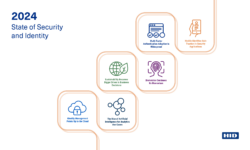Slumping Pro A/V Industry in Americas Forecast to Recover in 2022
AVIXA research shows an 8% drop from 2019 revenue levels this year with growth resuming in 2021 and record highs of $95 billion in 2022.

The 8% coronavirus-related drop in Americas pro A/V revenue in 2020 closely aligns with the global decline of 7.7% in 2020.
FAIRFAX, Va. — After reaching $93 billion in 2019, the Americas pro A/V market is projected to decline 8% to $86 billion in 2020 due to the COVID-19 pandemic, according to the new 2020 A/V Industry Outlook and Trends Analysis (IOTA) Americas Summary produced by the Audiovisual and Integrated Experience Association (AVIXA).
The downturn isn’t expected to last long, though, according to AVIXA, with growth resuming in 2021 and revenue levels at record highs in 2022 ($95 billion) and 2025 ($108 billion).
The overall global pro A/V market is expected to drop from $259 billion in 2019 to $239 billion this year, according to research by AVIXA, producer of InfoComm trade shows around the world.
The 8% COVID-19-related drop in Americas pro A/V revenue in 2020 closely aligns with the global decline of 7.7% in 2020. However, research shows the Americas will perform better than the Europe, Middle East, and Africa (EMEA) region, which is set for an 8.9% decline.
In contrast, the Americas will underperform Asia-Pacific, which will decline by 6.4%, according to AVIXA research.
“AVIXA’s latest forecast was formulated in the first half of 2020 and is based on the assumption that market growth would return in the second half of the year as businesses reopened and resumed purchases of pro AV products,” says AVIXA senior director of market intelligence Sean Wargo.
“Our forecasts show that a lot of the pro A/V products and services that were already trending upward — servers, digital signage, security, conferencing and collaboration — will pick up more steam because of the pandemic’s impact,” he states in the AVIXA announcement.
North America accounts for 87% of Americas regional revenue in 2020, a share that will largely hold steady through 2025. The South America market will undergo stronger growth, with a compound annual growth rate (CAGR) of 5.6% from 2020 through 2025 — compared to 4.5% for North America.
Central America & the Caribbean will attain region-leading growth with a 5.8% CAGR, according to AVIXA research.
Inside the AVIXA Research
Not only is the energy and utility market the fastest-growing in North America, it’s also the fastest across the entire Americas region with an 8.5% CAGR for 2020-2025.
Due to the pandemic’s impact on decreasing travel, demand for oil has dropped, however, the market is expected to rise rapidly as economic conditions improve. This will drive investments in smart city, smart grid, with heavy digital signage and control room solutions, translating into considerable demand for LED video displays, which will enjoy a 25.6% CAGR.
The fastest-growing industry in Central America and the Caribbean is transportation, with revenue rising at a CAGR of 10.4% to reach $331 million in 2025, up from $201.7 million in 2020.
Transportation also drives the pro AV industry in South America – the market will grow at an 11% CAGR from 2020-2025, growing from $511.1 million to $863.1 million. This growth is propelled by transportation hubs’ investments in pro AV solutions to increase health and safety measures.
In the Americas, education will suffer only limited fallout from COVID-19 in 2020, with pro AV revenue declining by 2.7% and a 4% rebound expected for 2021.
Given the unknown nature of COVID-19 and the uncertainty around the timing of a vaccine, schools and colleges will continue to invest in remote learning solutions including updates to classrooms in support of live-streaming.
This will not only drive software as a service (SaaS)-based distance-learning solutions but investment in remote teaching aid software, connectivity, and Cloud and managed services as well.
Media and entertainment is another market that stands out with a moderate 5.7% decline in 2020, followed by a strong 7.4% rebound in 2021. In the COVID-19 era, the consumption of digital content from mobile apps to TV and gaming has risen sharply, driving demand for associated equipment.
The demand for digital entertainment and business content is expected to increase substantially during the forecast years, giving rise to production, storage, and distribution equipment, software and services.
Conferencing and collaboration will remain the top solution bundle in the Americas with a 2.3 CAGR. Increased remote working in 2020, along with limited access for installation, will depress the need for on-premise conferencing in the very near term.
However, as employees return to work in a limited capacity, AVIXA predicts that there will be even more need for collaboration among on-premise and remote workers. This is expected to push the installations in the second half of 2020.
Over the long term, workspace trends moving toward smaller, more flexible spaces and more remote working will help to sustain growth and keep the conferencing solution in the top spot.
The IOTA report is produced by AVIXA in conjunction with Omdia (formerly IHS Markit), a global research firm with specialty across a number of underlying supply chain markets, many of which overlap with the principal components of the pro A/V industry.
This article first appeared in SSI sister publication Commercial Integrator.
If you enjoyed this article and want to receive more valuable industry content like this, click here to sign up for our FREE digital newsletters!

Security Is Our Business, Too
For professionals who recommend, buy and install all types of electronic security equipment, a free subscription to Commercial Integrator + Security Sales & Integration is like having a consultant on call. You’ll find an ideal balance of technology and business coverage, with installation tips and techniques for products and updates on how to add to your bottom line.
A FREE subscription to the top resource for security and integration industry will prove to be invaluable.













